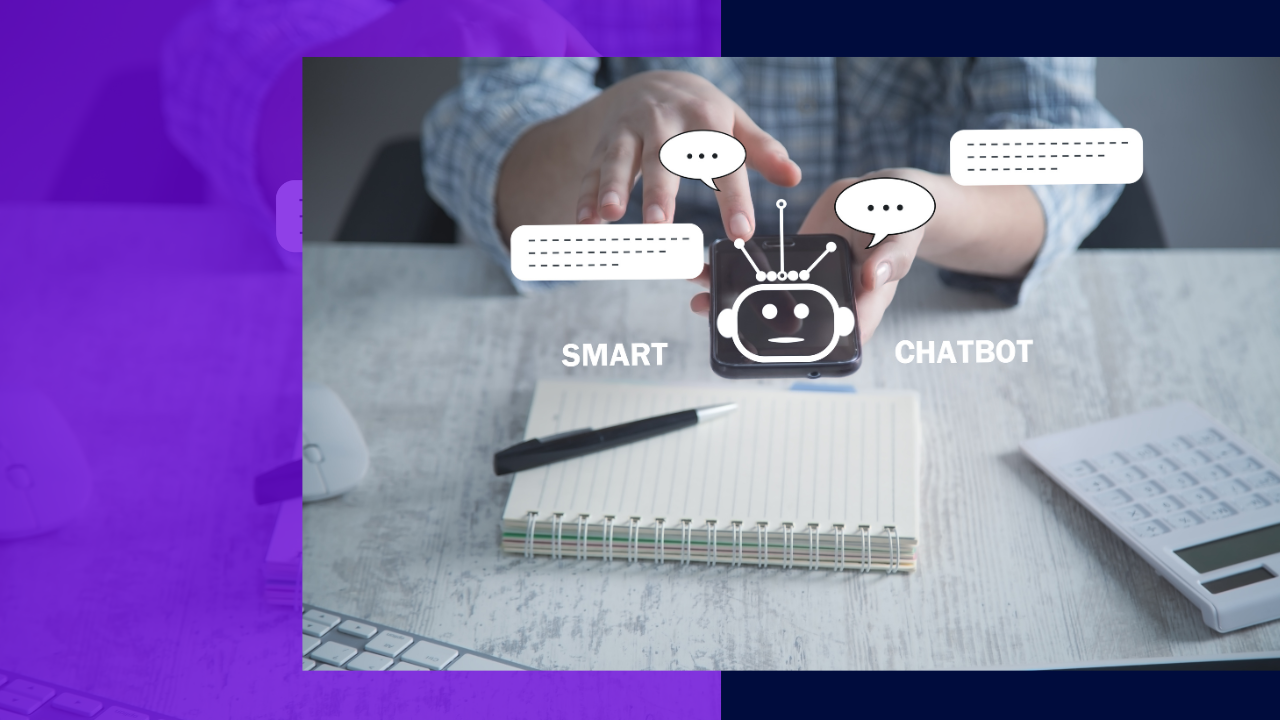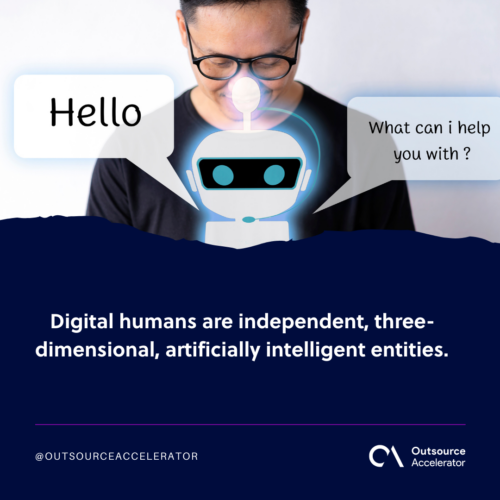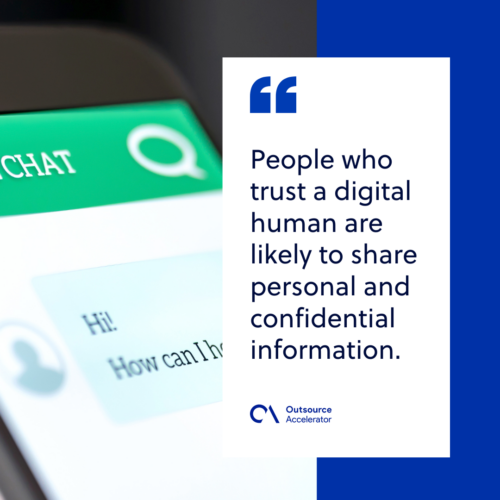What are digital humans?

Chatbots are digital programs powered by artificial intelligence (AI) and natural language processing. They recognize how human users sound and understand what they say when speaking.
When prompted, they provide automated responses, which simulate human conversation. Chatbots are the better choice for consumers who only want to ask a quick question.
In recent years, the concept of digital humans has been introduced. They are a more advanced version of chatbots—smarter and more expressive. They’re robots that look and sound like humans and can intelligently converse like one.
Since the introduction of these human-like AIs, more improvements have arisen, as well as controversy.
This article explains digital humans, their functions, and the risks that come with them. Learn how different industries can benefit from them.
Defining digital humans
Digital humans are independent, three-dimensional, artificially intelligent entities.
They are human-like in appearance, and they can also replicate human traits such as facial expressions and physical movements. This technology breakthrough is programmed to interact intelligently with real people.

Because digital humans look and sound like humans, they are more engaging to consumers than chatbots. They also provide a more meaningful experience due to their resemblance to humans, similar to talking to a friend.
They may be intentionally designed in the likeness of a real human being. You can even make yourself a digital twin – or a fictional character by inputting prompts and descriptions.
A disclaimer must be established with works of fiction. Digital humans may unintentionally resemble real human beings in physical appearance, names, or personality.
For a digital human to function, it relies on a combination of technologies such as AI, natural language processing and generation, and advanced 3D modeling.
Together, these technologies make digital humans the way they are.
Applications of digital humans in various industries
Digital humans are interactive tools that provide information and assist users. They are similar to Apple Inc.’s Siri and Amazon’s Alexa but much more advanced.
Leveraging realistic digital humans in various industries has revolutionized the way businesses operate in today’s virtual world.
A digital human is a better option than chatbots for communicating complicated instructions and lengthy product or service descriptions to users.
Digital humans are also evolving user experience to create a more meaningful and emotionally driven service.
The following are some of the sectors leveraging this technology to their own advantage:
Customer support
Other businesses utilize digital humans for customer service and client support.
Because they look like human beings, real people are more likely to engage with and trust them.
This means they can help your company to increase customer engagement, complete sales, and reduce the likelihood of product returns.
Digital assistants are crucial in improving efficiency and delivering seamless service experiences in the realm of customer support.
Education and training
Digital humans are set to radically change the nature of instruction by providing AI-driven tools for education and training. Digital teachers can be set to operate 24/7 for learners’ convenience.
Additionally, they can reach more people by being available online, rendering user location irrelevant. A digital human can also be trained to converse in different languages and easily switch between them for accessibility.
Healthcare
Healthcare is another industry that digital humans are revolutionizing. Their help makes simulations of medical scenarios much easier to create and use for medical training.
Gaming
Since video games were invented, there has been much development in graphics, world-building, storytelling, and mechanics. A digital human can only bring more to the plate.
In video games, there are characters you can interact with but never play as; they’re called non-playable characters (NPCs). They usually have quite a limited set of dialogue.
Programming them to have infinite dialogue that would most likely be one-sided isn’t much point.
However, with digital humans, this can change for the better. They can play the role of NPCs but with the quality of being completely interactive. This makes for a much more immersive and enjoyable video game experience.
Virtual influencers
Every day, more self-proclaimed influencers surface. A digital human can also work as an influencer or a brand ambassador.
A company can create a digital human mascot that advertises products and services. Like in customer service, a digital human would be more trustworthy and interesting than a chatbot.
Additionally, with good programming, they can advertise your company well without boring them or sounding like sales agents.
Risks that come with digital humans
Technology proves itself increasingly useful as time goes by. However, it still has its negative effects.
Digital humans, as you can imagine, come with risks. Some of them are:
User privacy
People are likely to put trust in a digital human, as established. But this time, let’s look at it in a different light.
People who trust a digital human are likely to share personal and confidential information. This creates a problem for user privacy and calls for the need for regulations on privacy protection.

Robots doing human jobs
Technology is advancing quickly. While this makes many things easier for humans, there is a risk of us being driven out of purpose in many industries.
Slowly, the need for human talent in certain jobs is decreasing. With these human-like virtual entities, this is all the more likely. They can easily replace administrative workers, for instance.
This is a risk that needs to be paid attention to as it could negatively affect the lives of multiple people and their families.
Implications on socialization
Some people may have difficulty making friendships with real humans. This causes a risk of people treating digital humans as sentient beings with whom they can have emotional relationships.
In addition, people may have human friends but no longer have any interest in physical interaction with each other. They may rely on their digital twins to represent them.
It’s essential to address the implications of advanced facial animation in socialization within the unreal engine early access program with a professional lens.
This may have negative implications on human relationships as well as the social, physical, and even mental well-being of humans.
Human children with digital teachers
A child’s mind is very impressionable; it’s still developing even by the time a child reaches the age of 12. See the article about a 12-year-old child’s development milestones here.
Children learn how to live by observing adult models. This is a natural process that children of all eras have experienced. Having a digital teacher at such an early age will disrupt this process.
Human teachers are better equipped to teach children. They have training and experience and are also a better fit to raise children. Keep in mind that children may spend around 30 hours a week in school with their teachers.
The future of digital humans
No matter what we do, technology will continue to evolve. We must learn to accept this and adapt to it. Better yet, we should figure out how it can best benefit us.
The future of digital humans looks promising as advancements in digital human creation, computer graphics, and human interaction continue to evolve.
As you have read in this article, a digital human can improve your business’ sales and customer support.
As long as you keep the risks in mind and work around them, employing digital humans will always do you more good than not.







 Independent
Independent




